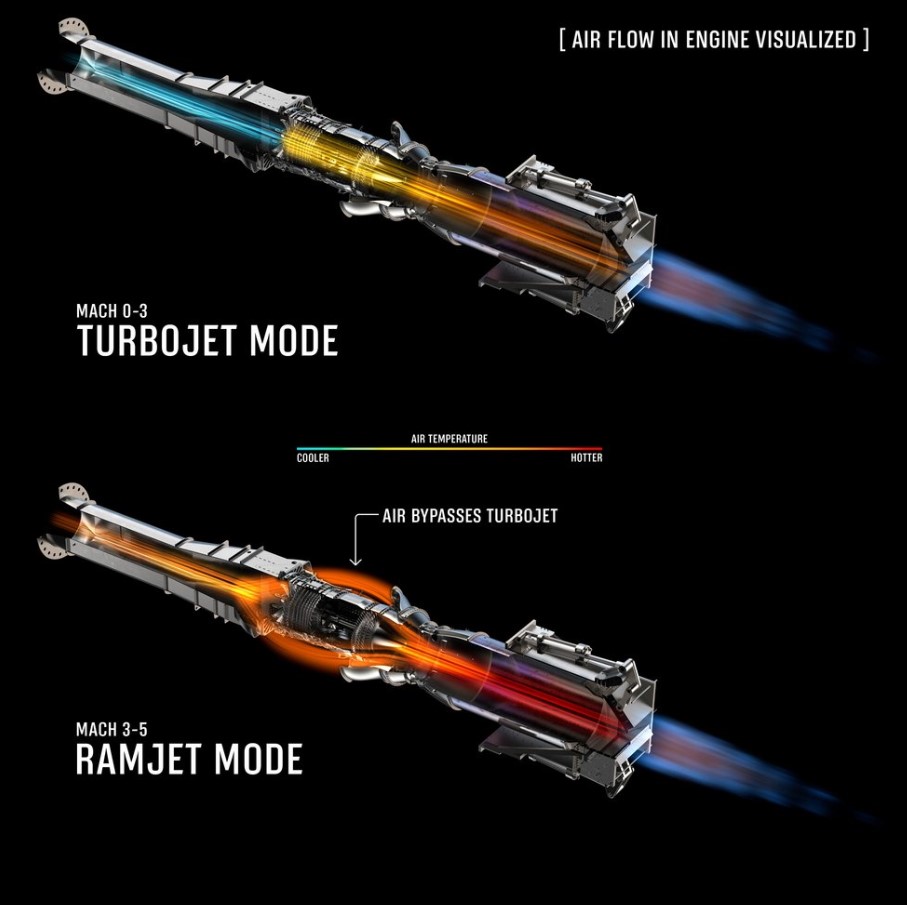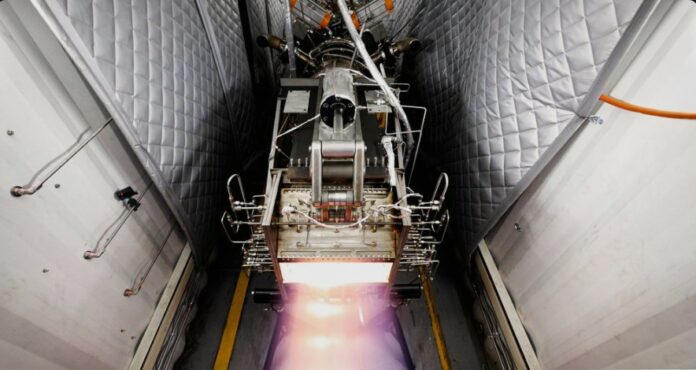Hermeus, a startup developing hypersonic aircraft, has demonstrated turbojet to ramjet transition within its engine, Chimera. This is one of the major advancements to making operational hypersonic flight a reality.
Chimera is a turbine-based combined cycle engine (TBCC) – it’s a hybrid between a turbojet and a ramjet. The ability to switch between these two modes allows Hermeus’ first aircraft, Quarterhorse, to take off from a regular runway and then accelerate up to high-Mach speeds.
The cost and speed at which the Hermeus team achieved this milestone is notable. Hermeus designed, built, and tested Chimera in 21 months for $18 million. Remember, the team had received more than $130 million in funding, including a $100 million Series B and contracts with the U.S. Air Force. It also got strong support from NASA and other U.S. government agencies, as well as funding from aerospace innovators like RTX Ventures, the venture capital group of Raytheon Technologies.
The engine is manufactured in-house, which allows for a tight feedback loop between engineers and technicians. This is crucial to enable the company to iterate quickly. Additionally, vertical integration eases reliance on outside vendors and allows for better control of the supply chain.
Furthermore, the aerospace company had made it clear from the very beginning: Metal AM is a core component of their plan to vertically integrate production and they are currently using a Velo3D machine to push the envelope of what’s possible at the manufacturing level. Today, about 15% of the engine is 3D printed which enabled rapid development.
As regards of the operation, as the temperature and the speed of the incoming air increase, turbojets hit their performance limit. This happens at around Mach 2. Chimera has a pre-cooler that reduces the temperature of the air coming into the turbojet. This allows Hermeus to squeeze out a bit more performance from the turbojet before transitioning to ramjet. At around Mach 3, Chimera begins to bypass the incoming air around the turbojet and the ramjet takes over completely.
A ramjet is a simple propulsion system which “rams” the incoming high-pressure air to create compression. Fuel is mixed with this compressed air and ignited for thrust. Ramjets are optimal between Mach 3 and Mach 5.

The testing took place at the Notre Dame Turbomachinery Laboratory which provides heated air to simulate high-Mach temperatures and pressures. With mode transition successfully demonstrated, the Hermeus team is now racing to manufacture the first Quarterhorse aircraft that will begin flight testing in late 2023.
Remember, you can post jobopportunities in the AM Industry on 3D ADEPT Media free of charge or look for a job via our job board. Make sure to follow us on our social networks and subscribe to our weekly newsletter : Facebook, Twitter, LinkedIn & Instagram ! If you want to be featured in the next issue of our digital magazine or if you hear a story that needs to be heard, make sure to send it to contact@3dadept.com






